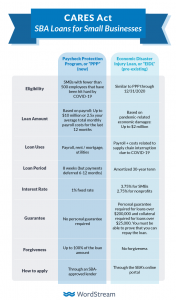Influencers are steroids, sometimes they inject a quick burst of needed energy and sometimes they do nothing but cause cancer.
For the general public, the term “influencers” usually brings up one of two images:
- A YouTube star who promotes products on Instagram they get for free
- The [expletive] who helped promote the Fyre Festival
For those of us in e-commerce, influencers have just as dubious a reputation, either as gatekeepers to a coveted audience or liars who pad their followers and steal your money.
Whenever a brand uses the influencer marketing strategy, the marketing team is looking to improve brand affinity, increase revenue growth, develop content creation or some combination. However, influencers are steroids, sometimes they inject a quick burst of needed energy and sometimes they do nothing but cause cancer.
Online marketing professionals, media buyers, executives and the like have to realize that there are some hard truths about going the influencer route. Rarely does the marketing team ask where targeted consumers are spending their time; and, really, shouldn’t that be the first question they ask?
Having someone impressive or popular to promote your product might feed your ego, but does it get measurable results?
Another hard question is – will any of the created content drive the conversation? Whether the product is makeup, a new holiday toy, tax software or whatever, the conversation has to be substantive and of value. Marketing dollars spent must have a measurable and reliable ROI otherwise what is the point?
So, what to do about influencers?
Look, influencers can be effective. A recent study showed that 35% of adults online use Instagram which is tens of millions of people. In 2017, the influencer market hit over $1 billion globally, it will hit $8.5 billion this year and hit $10 billion in 2020; so obviously there is something to it. But, if a marketing campaign is targeted for true value (which it always should be) then the issue is macro versus micro. A recent audit by The Social Chain of 10,000 influencers found that 25% of their followers were involved in fraud, either through buying followers, faking engagement or some other sleight-of-hand behavior.
If some rando housewife in Minnesota claims three million followers, you should probably do some homework before giving her a six-figure deal to promote your product.
This fraud and abuse wisely gave rise to the use of “micro-influencers.” These are Instagram users with over 10,000 followers on any one social media outlet, but less than 500,000. The numbers aren’t staggering, but they are measurable. With one micro-influencer, you could spend $1,000 to reach 50,000 people. With a macro, you could spend $50,000 to reach 1 million followers. The spend is way more impactful if you’re willing to be more targeted.
The key to any good micro-influencer though isn’t the size of the audience, but the engagement. Even celebrities with ten million Twitter or Instagram followings are not helpful to a marketing campaign if their audience is flat, detached and uninterested. But a micro-influencer, say a 21-year-old college junior with 100,000 die-hard followers who love her posts about the best workout towels and worst toenail polish, is way more valuable because you can trust her audience and measure the ROI when you invest money into a campaign involving her.
The other key to using influencers is finding those that work best on mobile devices. The desktop advertising dollars have plateaued and with good reason. People stuck in corporate jobs use desktops and seniors stuck in their homes use desktops. The dynamic audience has followers using their phones or tablets as often as possible.
Why does this obvious fact matter? Because even a micro-influencer has to be measured by their audience quality and participation, not the numbers. One influencer with 100,000 followers who are mainly at their desk watching YouTube instead of doing paralegal work is less valuable to a shoe company than someone with 25,000 users who are 25 years old and work in non-office jobs.
Use influencers if it makes sense for your campaign and your product, but only you’re willing to do research and background on the potential followers. An easy exercise is to go to your preferred micro-influencer Instagram account, choose five followers at random and see if those accounts belong to real people. Measuring if they’re legit can be that easy.
In the old days, having a big handsome quarterback promote your car was great, but that didn’t mean results. Such timeless taglines as “where’s the beef” and “time to make the donuts” happened without stars, without big names and with simple, measurable, creative marketing.
At the end of the day, use a campaign that works for your brand, not what’s flashy or what makes you feel good. Profits should drive decisions, brand recognition and month-to-month, year-over-year profit increases. This is basic business sense, but something all of us in e-commerce need to go back to every day.
Opinions expressed in this article are those of the guest author and not necessarily Marketing Land. Staff authors are listed here.
Marketing Land – Internet Marketing News, Strategies & Tips
(60)
Report Post







